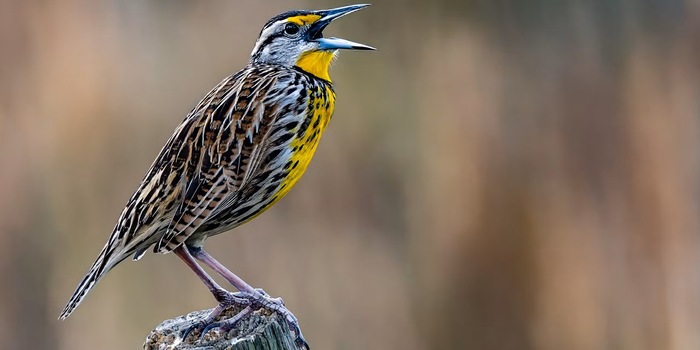
It is in population centres that birds are disappearing the most
The numbers of many North American bird species are declining sharply. This is particularly affecting regions where the animals are still most common.
Since 1970, the number of birds in North America has decreased by three billion animals; in many cases, once common species have experienced serious population declines. Alison Johnston from the Cornell Lab of Ornithology in Ithaca and her team show in a follow-up study that the species are suffering the most in the areas where they actually have their population centres: This is where their populations are declining the most, as shown by the analysis of a huge citizen science data collection with 36 million entries via the eBird platform for almost 500 bird species from North America and the Caribbean.
The figures show that 75 per cent of bird species have declined in population since 2017; for two thirds, the decline is even very significant. Those living in grasslands, arid regions and arctic ecosystems are particularly affected. However, the decline is not evenly distributed across the area: thanks to the size of the data set, which also includes regional data, Johnston and co were able to divide the study area into a grid, each part of which is 27 square kilometres (10 square miles) in size: according to the working group, the highest resolution grid for which such an analysis has been carried out to date.
This allows for a more precise inventory, which does not bode well: more than 80 per cent of the species recorded are not disappearing most strongly at the edges of their distribution area, but in the very core of their habitat - where they were most common just a few years ago. For almost all species (97 per cent), however, there are also areas where they were sighted more frequently, for example because they were better protected there or ecological factors had changed in their favour. Certain regions such as the Appalachian Mountains near the east coast or some mountain ranges in the west of the continent also form islands of stability in which a broad decline in bird numbers has so far failed to materialise.
The study is purely an inventory and does not address the exact causes of the losses. However, the scientists name the usual influencing factors such as intensified agriculture, climate change and rampant urbanisation that have led to the losses. They also fit the picture: in other regions of the world such as Europe or Asia, birds are also disappearing, sometimes en masse. And even remote regions of Amazonia are no longer spared.
Spectrum of science
We are a partner of Spektrum der Wissenschaft and want to make sound information more accessible to you. Follow Spektrum der Wissenschaft if you like the articles
Originalartikel auf Spektrum.deExperts from science and research report on the latest findings in their fields – competent, authentic and comprehensible.